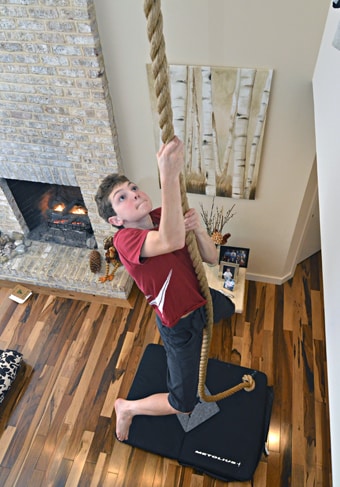
Power training on a gym rope in the Hörst living room!
Gym rope and inverted ladder climbing is one of the very best ways to develop awesome upper-body power. Legendary boulderer John Gill used rope climbing as a staple training exercise, and years later John Bachar popularized inverted ladder training among climbers. The Bachar Ladder, as it became known, was a popular training exercise of high-end climbers throughout the 1980s. Since the advent of indoor climbing walls and the campus board, however, rope and ladder climbing have fallen largely out of use. Still, serious climbers would be wise to incorporate some arm-only gym rope climbing into their training program—“campusing” up a 1.5-inch-thick gym rope is, in my opinion, one of the best arm-power-training exercises a climber can do!
After a lengthy warm up of pull-ups and mild upper-body stretching, begin from either a standing or sit-down (harder) position and grip the rope with both arms at near-full extension. Begin with an explosive two-arm pull and then continue upward as fast as possible using quick, crisp arm-over-arm movements. The goal is to maintain smooth, steady upward movement for the duration of the ascent, although it may take some time to develop the necessary arm strength and power. Upon reaching the top, slowly lower back down with controlled hand-under-hand movements—do not drop down in a fast, jerky manner that will shock-load the elbows and shoulders. If you sense a loss of control, in ascending or descending, immediately clamp down on the rope with your feet rather than risk falling.
Perform three to eight (an elite alactic-power workout) total laps on the rope, always taking at least a three-minute rest between ascents. Optimal adaptations (and gains) to power training come from high-quality, full-speed efforts—think of each ascent as a sprint! Therefore, it’s better to do four full-speed sprint ascents, rather than eight low-powered “jogs” up the rope.
Two technical tips: Think about pulling the engaged hand down to meet your upper chest and, in reaching up, grab the rope with your arm less-than-fully extended (an elbow angle of between 120 and 150 degrees is good, the latter being much harder).
Copyright © 2000–2016 Eric J. Hörst | All Rights Reserved.

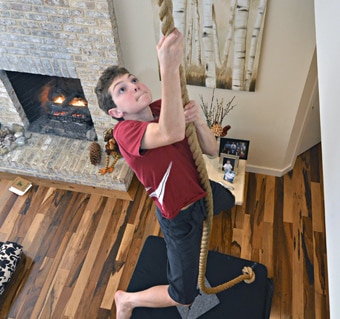

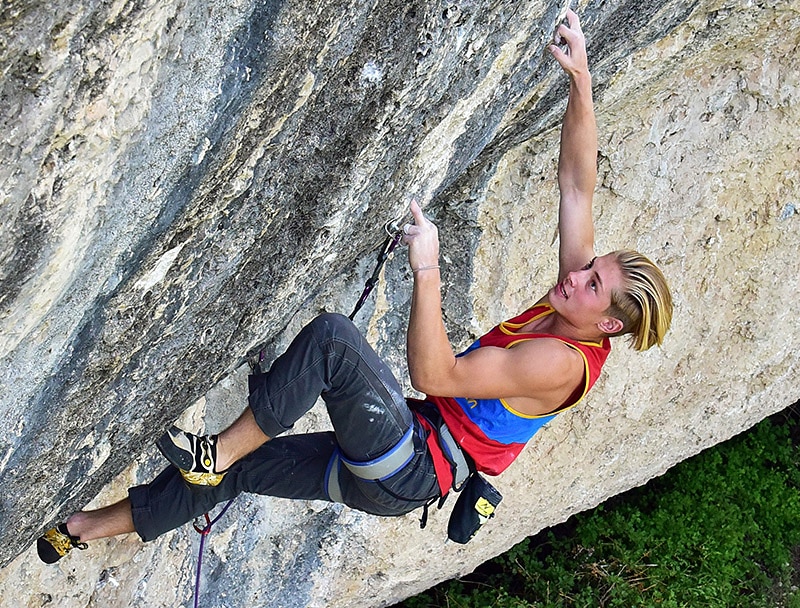
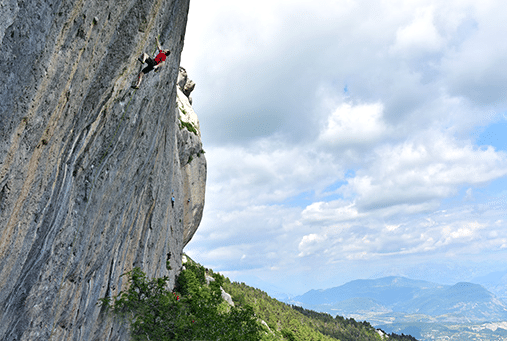
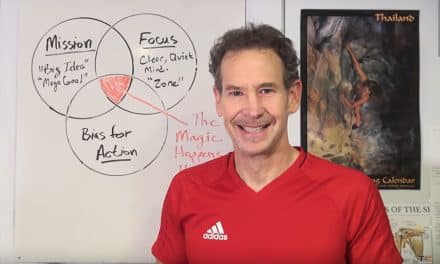
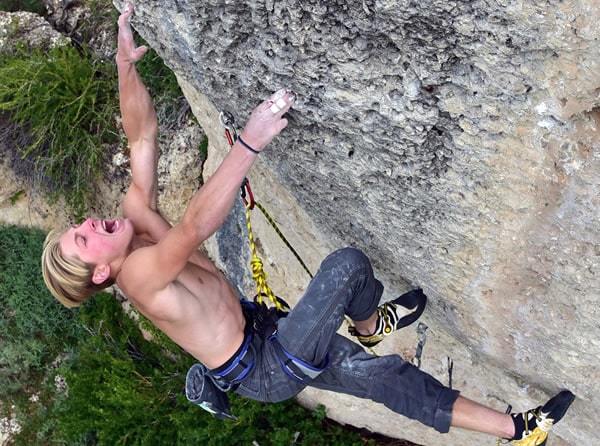

![🚨New Training For Climbing podcast drop! [**Link in bio.**]
This a two-part deep dive into designing a comprehensive, long-term systems approach to training. Coach @eric_horst unpacks—in rich detail—how systems actually function, and he highlights how transformative climbers throughout history “shake up the box” with innovative, highly effective methods to achieve big goals and push the boundaries of our sport.
In Part 1 (#122), Eric blends a concise climbing history lesson with an engineer-like breakdown of how intelligent systems operate. Part 2 (#123) of this series will deliver the actionable strategies you can use to build a personalized, high-performance training system for this winter…and for many seasons to come.
Eric emphasizes that as climbers progress beyond the beginner stage, climbing and training grow increasingly complex—requiring intentional, organized, and year-round development of strength, technique, mental skills, recovery habits, nutrition, and lifestyle management. Rather than ad-lib sessions or singular-focus programs (like only training strength), climbers need a comprehensive system fine-tuned daily and seasonally.
This is an entertaining and thought-provoking episode—so lean in, listen closely, and get ready to feel inspired, challenged, and equipped to level-up your modus operandi at the crag, in the gym, at home, and in everything you do! Listen on Apple Podcasts, Spotify, or online using the web player below.
#climbingtraining #bouldering #indoorclimbing #climbing #climbingpodcast #erichorst #trainingforclimbing @lasportivana @physivantage](https://trainingforclimbing.com/wp-content/plugins/instagram-feed/img/placeholder.png)


